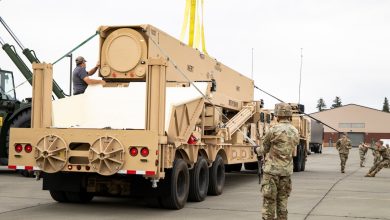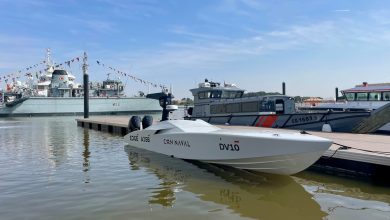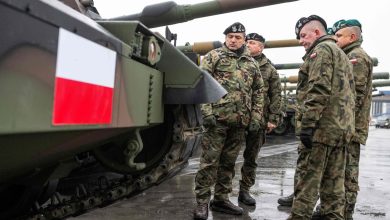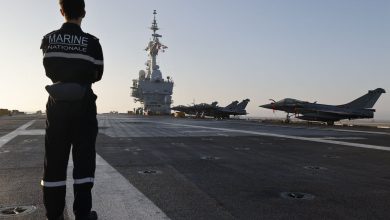Marines take steps to hack human performance with data
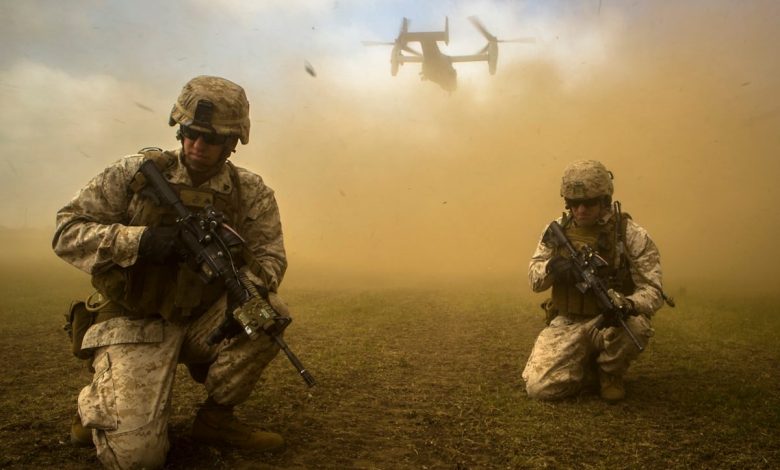
After years of deliberation, the Marine Corps is taking its first steps to embrace a program that would aim to make jarheads the most lethal versions of themselves — from sleep and stress level control to marksmanship.
The Office of Naval Research has begun work on an initiative known as Warrior Resiliency, which would use wearable technology and other data sensors to develop sophisticated predictions about how to supercharge Marines’ performance and adapt training for maximum effect.
The effort, which was funded through a $4.4 million allocation in fiscal 2024, is taking shape as the Army trumpets early successes of its Holistic Health and Fitness program, which aims to “unlock … peak performance” by giving soldiers access to expert coaches and equipment.
But the roots of Warrior Resiliency and similar efforts, according to those close to the initiative, date back years — to the Pentagon’s Close Combat Lethality Task Force, spearheaded by then-defense secretary Jim Mattis.
Established in 2018, the CCLTF aimed to close key capability gaps with joint solutions. One of those identified gaps was the individual performance of warfighters; a 2018 Defense Department memo establishing the task force directs that science and technology be leveraged to improve human performance “within ethical guidelines.”
But according to Chief Warrant Officer 5 Stephen LaRose, who served on the task force as an adviser and program manager until 2023, the Corps has struggled to put meaningful investment and support behind a program that would achieve these aims.
Despite a variety of limited objective experiments, he said, “there hasn’t been any program that’s been comprehensive enough … that would transition to a human performance program of record.”
A 2021 collaboration with Army Combat Capabilities Development Command resulted in an “Optimizing the Human Weapons System (OHWS)” roadmap to a Marine Corps program that would use wearables and smart devices to create a sophisticated dashboard showing troops’ “wellness inputs,” such as alcohol consumption and physical exercise, training load, sleep data and recovery stats.
A presentation of the plan, reviewed by Marine Corps Times, shows a timeline of milestones leading up to a needs analysis to be completed by Marine Corps Warfighting Lab in 2023.
That year, Brig. Gen. Kyle Ellison, then the commander of the Marine Corps Warfighting Lab, linked OHWS and Warrior Resiliency in an endorsement letter, calling for resources to establish a service program of record.
Peter Squire, ONR’s program officer for Human Performance Training and Education, told Marine Corps Times that Warrior Resiliency, in its current form, aims to create readiness “status indicators” for unit leaders by assessing Marines’ biometrics to prevent injury and optimize performance.
He noted that maturing wearable and biometric tracking technology enabled better and more effective monitoring now than had previously been possible.
“It’s really been, I think, within the past five years or so that we’ve seen the ability for accurate commercial wearable devices that can be used in a more continuous or persistent manner, where we can get information now to better understand status and indicators over time,” he said. “So, it’s sort of been the culmination of a couple different aspects over time, where we saw there was a good opportunity to put it forward.”
Many of the specifics of the effort remain under wraps. The first priority of Warrior Resiliency, which got underway in earnest last spring, has been the establishment of predictive algorithms and frameworks for processing data and making decisions.
Some experimentation has been conducted with active Marine Corps units, Squire said, although he declined to name which ones, pending the service’s authorization. The specific devices to be used in widespread data collection are still pending.
“Right now, we are focused on utilizing what the commercial market has available, and have working partnerships with a variety of different vendors,” Squire said.
Device accuracy will be a priority, he added, and the form factor of devices used — armbands versus rings or watches, for example — may depend on individual Marines’ preferences or their job duties.
Ultimately, Warrior Resiliency will be a “multi-year effort” resulting in prototype platforms and “knowledge products” to help the Corps establish a broad-edged program within the operating forces, Squire said.
He compared the expected result to the Corps’ Marksmanship Campaign Plan, released earlier this year, that represented the service’s most aggressive reimagining of arms training and skills development in a century.
Within the next eight months, he expects the Corps and ONR to reach decisions around larger-scale system testing and next steps, he said.
For LaRose, concerns remain that the Corps will fully embrace the work being done and build human performance assessment into regular training and operations.
“Every Marine a rifleman, but we got to get past the [sole focus on] marksmanship,” he said. “You’re … using the rifle to get to the stress, to the decisions, to the finite motor skills.”
Read the full article here

